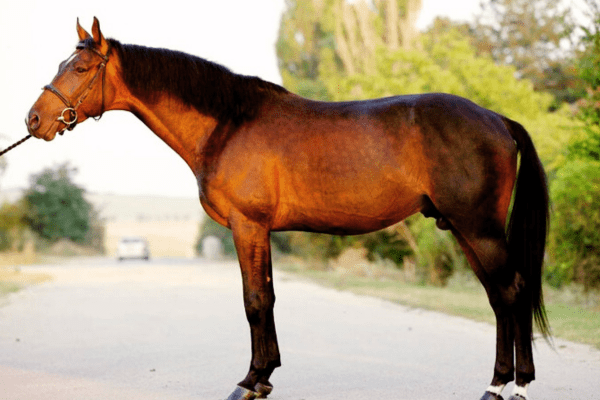The East Bulgarian Horse, a splendid specimen of Bulgarian equine heritage, stands as a modern marvel in the realm of warmblood breeds. Emerging as a notable force in the equestrian sports domain, this breed has rapidly ascended in popularity, captivating enthusiasts worldwide. Renowned for their serene yet spirited nature, these horses possess an innate versatility and talent.
Excelling in areas ranging from everyday riding to demanding work tasks, their finesse is particularly evident in competitive spheres. Their achievements span from show jumping to dressage, showcasing their skills even on the grand stage of the Olympics. The rise of the East Bulgarian Horse in the global equestrian landscape highlights its unique blend of temperament, agility, and grace.
History:
The East Bulgarian Horse has long been considered a symbol of Bulgaria’s rich equestrian culture and history, standing out from other breeds as one of its signature characteristics. Not just an animal husbandry story, the breed’s story encapsulates not just animal husbandry but rather its place within culture for centuries – as horses have played such an essential part.
Historical Significance and Development
Horses Are Central to Bulgarian Culture: Since antiquity, horses have played an essential role in Bulgarian society by serving in warfare, agriculture and transport roles.
Birth of a Breed: The East Bulgarian Horse first entered into existence in 1894, marking a new era in Bulgaria’s equestrian history.
Selective Breeding Program: This breed was the result of an intensive selective breeding program conducted at Kabiuk State Stud and Stallion Depot near Sofia, combining resilience of Bulgarian horses with elegance of Thoroughbreds and Anglo-Arabians.
Goals and Vision of Breeding
Create a Versatile Horse: Our objective was to breed an all-purpose half-bred horse capable of excelling at racing, rigging and labor tasks alike.
Initial Years: At first, this breed remained primarily popular with Eastern European equestrian enthusiasts.
Rising Popularity and Recognition
Gaining Global Recognition: Over time, the East Bulgarian Horse has garnered international renown, particularly within equestrian sports.
Success in Sports: Their capabilities shone through in disciplines like show jumping and dressage, even at major events like the Olympic Games.
Official Recognition and Continuous Improvement
Establishment of a Stud Book: One significant milestone in the breed’s history was its official recognition and subsequent creation of a stud book in either 1951 or 1959.
Enhancing the Breed: Breeding strategies have evolved rapidly over the years to incorporate genetics from established breeds like Trakehners, Arabians, Hanoverians, Haflingers and Thoroughbreds to ensure continuous improvement and adaptation within each breed. This ensures continuous adaptation within each breeding program as well.

Physical Characteristics:
Appearance: The East Bulgarian Horse boasts an attractive, athletic build with well-proportioned features such as strong back muscles and muscular hindquarters as well as an oval chest area.
Size and Color: Standing approximately 15-16 hands (60-64 inches), they often display bay, chestnut, or black colors – the latter three being most prevalent.
Temperament: Coggins horses are well known for their intelligence and lively personalities, as well as their calm temperament that make them suitable for riders both experienced and beginner alike.
Performance and Uses:
Versatility: These horses excel at various disciplines such as show jumping, dressage, eventing and endurance riding.
Endurance and Agility: Their stamina and agility make them ideal for sports requiring speed and endurance, such as racing.
Cultural Impact: Beyond sports, horses play an integral part of local traditions and ceremonies as symbols of Bulgaria’s rich equestrian history.
Conservation and Breeding:
Preservation Efforts: With changing times comes dedicated efforts to conserve and breed this ancient breed while honoring its cultural and historical value.
Breeding Programs: Breeding programs are established to preserve the breed’s characteristics and ensure its longevities and purity.


